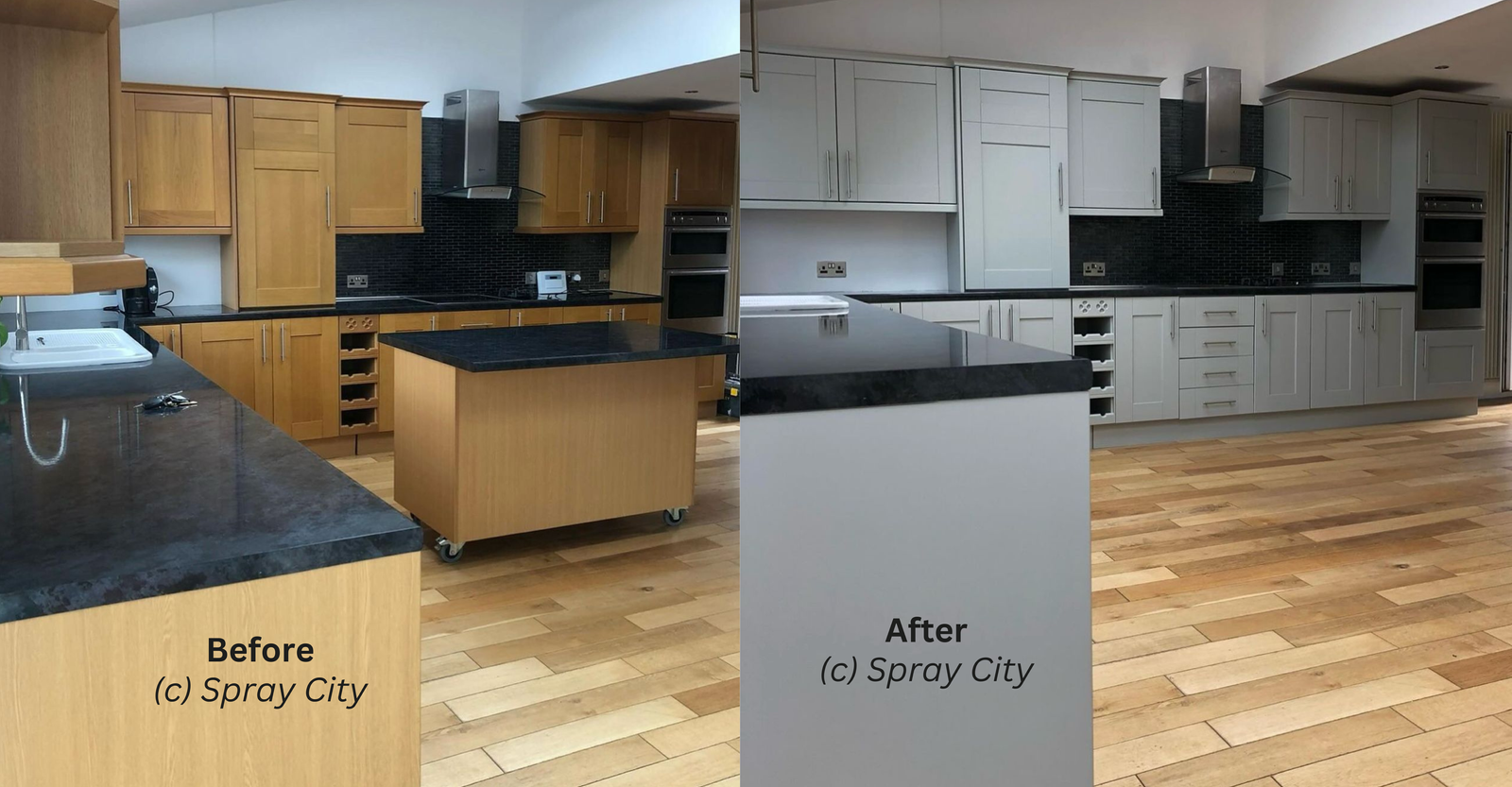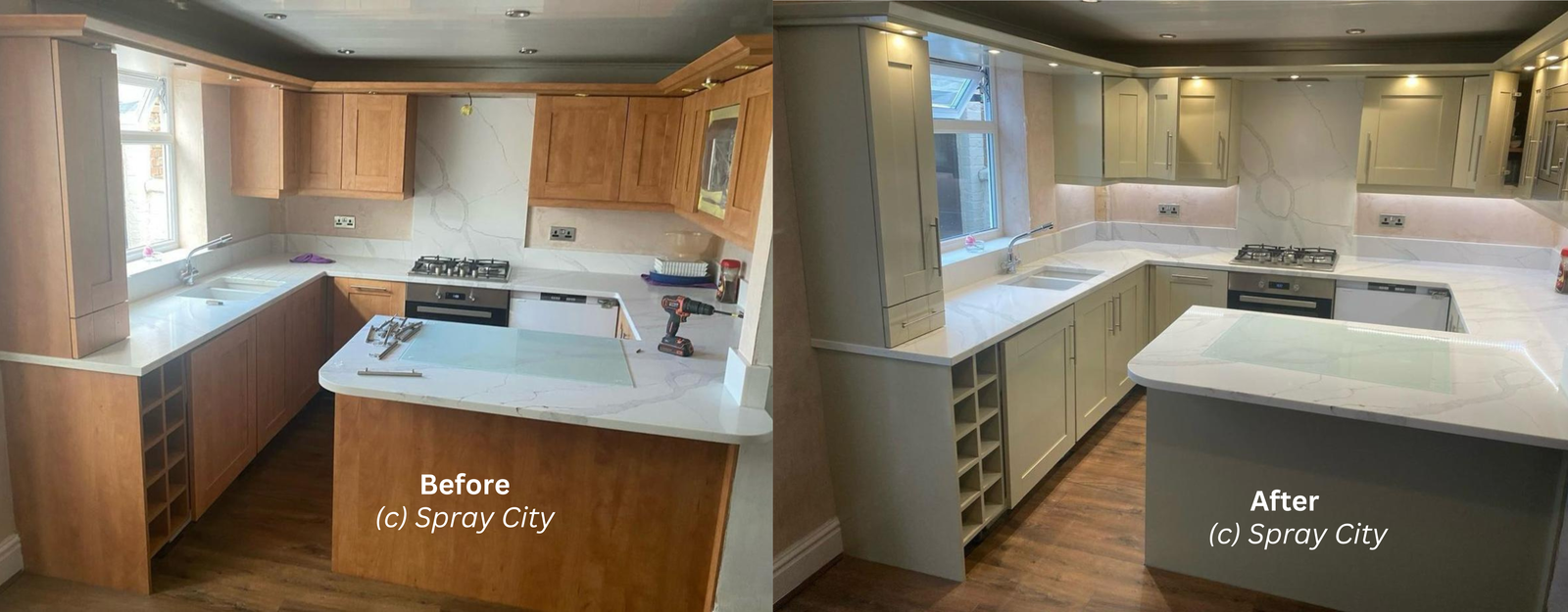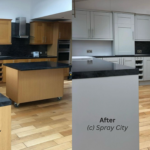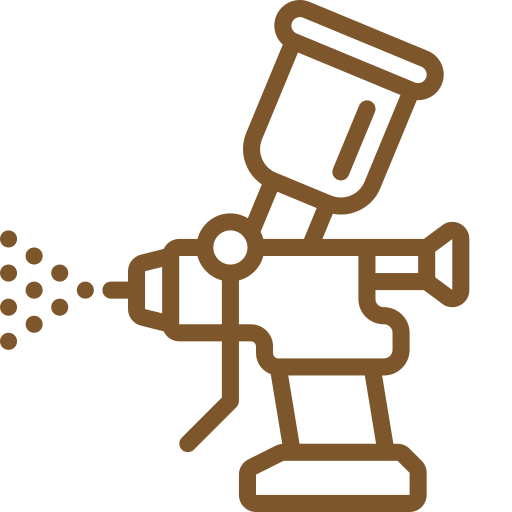Introduction
When it comes to changing the look of your space, few tools are as effective as paint sprayers. No matter the renovation, paint sprayers can save you time and give your project a professional-looking finish. However, if you’re new to paint sprayers, choosing the right one can be confusing. There are different types, price ranges, and features to consider. This guide will walk you through everything you need to know, from understanding the different types of paint sprayers to figuring out what’s worth the investment.

What Are Paint Sprayers?
Paint sprayers are tools that atomize paint, breaking it down into tiny droplets and spraying it onto surfaces evenly. Unlike brushes and rollers, sprayers apply paint in a fine mist, covering surfaces much faster and with fewer streaks or brush marks. This makes them an ideal choice for large surfaces or projects that require a smooth, professional finish.
While paint sprayers are excellent for speed and quality, they do come with a learning curve. They require setup and practice, but once you get the hang of it, you’ll wonder why you didn’t switch sooner.

Types of Paint Sprayers
Not all paint sprayers are equal. Depending on your project, you may need a specific type of sprayer to get the best results. Below are the main types of paint sprayers available:
-
Airless Paint Sprayers
Airless sprayers are one of the most popular choices for both DIY enthusiasts and professionals. They work by pumping paint at high pressure through a hose and out of a tiny nozzle, which atomizes the paint into a fine mist. Airless paint sprayers are great for large surfaces like walls, ceilings, and fences.
Pros:
– Fast application
– Smooth finish on large surfaces
– Can handle thicker paints without dilution
Cons:
– Requires more paint than other types (due to overspray)
– More expensive than other sprayers
– Takes time to clean

-
HVLP (High Volume Low Pressure) Paint Sprayers
HVLP sprayers use a lot of air to propel paint at a lower pressure, resulting in a more controlled spray. They are commonly used for detailed work and smaller surfaces like furniture, trim, and cabinets. The lower pressure reduces the risk of overspray and waste, making them more efficient for smaller projects.
Pros:
– Better control for detailed work
– Less overspray and waste
– Ideal for thinner paints like stains or lacquers
Cons:
– Slower application
– May need to thin the paint for proper flow
– Not ideal for large surfaces

-
Compressed Air Paint Sprayers
These sprayers use an air compressor to atomize the paint and are mostly used for auto body work and industrial applications. While not as commonly used for home improvement, they’re still a good choice if you already own an air compressor.
Pros:
– Can be used with an existing air compressor
– Smooth, even finish
Cons:
– Requires an air compressor, which adds to the cost
– Less portable
– Overspray can be an issue

-
Handheld Paint Sprayers
Handheld sprayers are lightweight, portable, and easy to use, making them a great option for small DIY projects. They don’t require an air compressor and are perfect for quick jobs like touch-ups or painting furniture.
Pros:
– Affordable and easy to use
– Portable and great for small projects
– No need for extra equipment
Cons:
– Limited capacity
– Not suitable for large-scale projects
– Lower precision than other sprayers

How Much Do Paint Sprayers Cost?
The price of paint sprayers can vary widely, depending on the type, brand, and features. Here’s a general breakdown of what you can expect:
–Entry-level sprayers: These typically start at around £50–£150 and are ideal for small projects or occasional use. Handheld models and lower-end HVLP sprayers fall into this category.
–Mid-range sprayers: Ranging from £150–£500, these are best for regular DIYers who want more versatility and better performance. Most airless sprayers fall into this price range, offering more power and a smoother finish.
–Professional-grade sprayers: For the pros or serious hobbyists, high-end models can cost anywhere from £500 to £1,500. These are top-of-the-line airless or HVLP sprayers that can handle large projects and heavy-duty use.
Factors that can influence the price include:
- Type of sprayer: Airless, HVLP, or air-assisted sprayers have different price points.
- Brand: More popular brands usually cost higher than less popular brands.
- Power source: Electric or gas-powered sprayers can vary in cost.
- Capacity: The amount of paint the sprayer can hold affects the price.
- Features: Additional features like adjustable nozzles, variable pressure, and built-in filters can increase the cost.

Factors to Consider When Choosing a Paint Sprayer
With so many options available, how do you choose the right paint sprayer for your needs? Here are a few factors to keep in mind:
-
Project Size:
Are you planning to repaint a single room or tackle your entire home’s exterior? For large-scale projects, an airless sprayer is your best bet. If you’re focusing on smaller jobs like painting furniture or cabinets, an HVLP or handheld sprayer will be more than enough.
-
Surface Type:
The surface you’re working on matters too. Airless sprayers are great for rough, uneven surfaces like fences or textured walls because they can apply thicker coats. HVLP sprayers, on the other hand, are better for smooth, detailed work like furniture or trim.
-
Paint Type:
Not all paint sprayers handle every kind of paint. Thicker paints like latex will need a powerful airless sprayer, while stains, lacquers, and varnishes work better with HVLP models. Always check the manufacturer’s recommendations for paint compatibility.
-
Portability:
If you’re moving around a lot during your project, portability is crucial. Handheld and some HVLP sprayers are more portable, but airless sprayers often come with wheels or extended hoses to make them easier to move around.
-
Budget:
Your budget will likely play a big role in your decision. While it’s tempting to go for the cheapest option, consider the long-term investment. A higher-quality sprayer might save you time and money down the road with better performance and durability.

Professional Tips for Using a Paint Sprayer
Once you’ve chosen your paint sprayer, here are some tips to get the best results:
- Practice first: Before you dive into your main project, practice on a piece of cardboard or scrap wood to get the hang of controlling the sprayer.
- Keep your paint gun perpendicular: Hold the sprayer perpendicular to the surface you’re painting to ensure the paint is applied evenly. Angling the gun can lead to an inconsistent finish and excess paint build-up on one side.
- Keep a consistent distance: Aim to keep the sprayer about 6–12 inches away from the surface for even coverage.
- Keep a moderate speed: Avoid moving the sprayer too quickly, which can result in thin, uneven coverage, or too slowly, which can cause runs and drips. A steady, moderate speed ensures a smooth and consistent coat so the goal is to be neither too fast nor too slow.
- Use smooth, overlapping strokes: Start moving the sprayer before pulling the trigger and overlap each stroke by about 50% to avoid lines or uneven spots.
- The lower the pressure, the better: Using the lowest pressure setting that still atomizes the paint effectively helps reduce overspray and gives you more control over the finish. Start low and increase the pressure only if necessary.
- Start in the corner: Begin your spray in a corner or less noticeable area. This gives you a chance to adjust the sprayer and flow before moving on to more prominent sections.
- Clean your sprayer after each use: This will prevent clogs and ensure your sprayer lasts longer.
- Safety first: Always prioritise safety by wearing protective gear such as goggles, gloves, and a respirator if necessary. Ensure the work area is well-ventilated, especially if you’re using paints that emit fumes.

When to Hire a Professional Spray Painter
While paint sprayers can make your DIY projects faster and more efficient, there are times when hiring a professional might be the better choice. If you’re dealing with a large-scale project, complex surfaces, or high-end finishes, a professional spray painting service can ensure a flawless result. They’ll have the experience, tools, and techniques to handle any job with precision.
The Spray City Difference On Spray Painting
At Spray City, we have ten years of experience in providing spray painting services for homeowners across the UK. Our skilled technicians are trained in the latest spraying techniques and use state-of-the-art equipment to ensure flawless results every time. You can trust us to deliver exceptional quality and craftsmanship that enhances the beauty and value of your home and property.
Contact us today for a free quote and let us help you transform your home into a mural that showcases your personal style and creativity!

Conclusion
Paint sprayers are a fantastic tool for getting a smooth, professional finish on a variety of surfaces. By understanding the different types of paint sprayers, their costs, and the factors that matter most for your project, you’ll be well-equipped to make the right choice. And if things start to feel overwhelming, don’t hesitate to call in a professional for that expert touch.
















